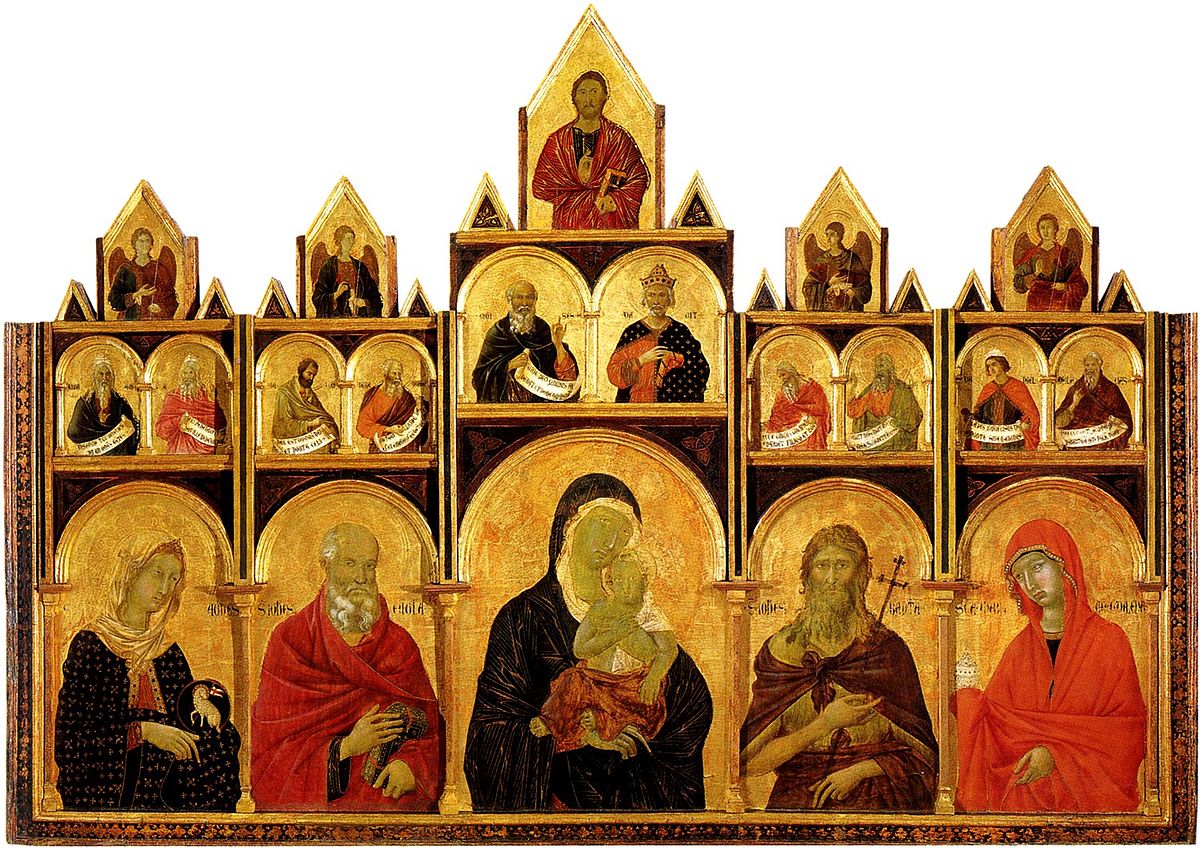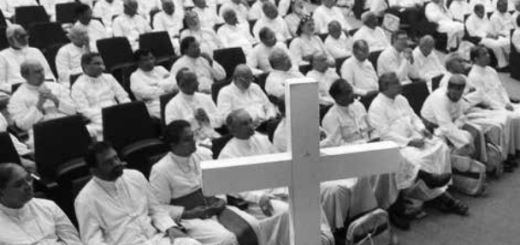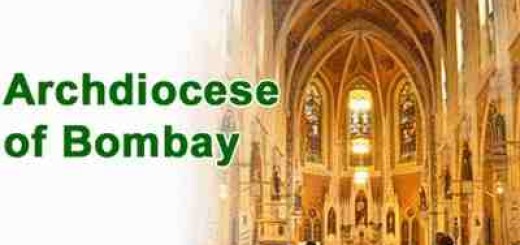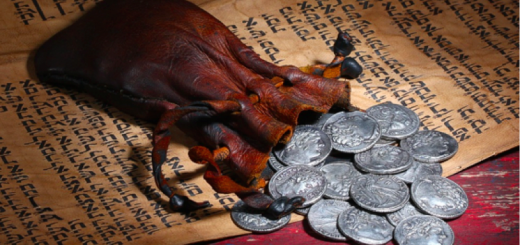Saint (so & so) Private Ltd

 It took so many centuries for the Vatican to raise an Indian to sainthood. It was more or less the beginning of a series. The present statistics show that within the coming two three decdes there could be some ten more saints in India. Prof. C John Rose is analysing this trend from a diffferent perspective. There is always a question – do the Christians in India gently turn from Christ to the saints? This article has nothing to do with the recently released Malayalam film Punyaalan Private Limited. Joseph Mattappally – asso. editor -CCV
It took so many centuries for the Vatican to raise an Indian to sainthood. It was more or less the beginning of a series. The present statistics show that within the coming two three decdes there could be some ten more saints in India. Prof. C John Rose is analysing this trend from a diffferent perspective. There is always a question – do the Christians in India gently turn from Christ to the saints? This article has nothing to do with the recently released Malayalam film Punyaalan Private Limited. Joseph Mattappally – asso. editor -CCV
 Prof. C. John Rose (C.J. Rose),
Prof. C. John Rose (C.J. Rose),
Ever since Graham Steins was torched to death along with his two sons in the small village Manoharpur in Odissa, he has remained in the public domain for veneration. As he was not a catholic, he escaped being sanctimoniously swooped for sainthood and catapulted to the arena of altar. He still captures the imagination of young evangelists and social activists, both nationally and globally, without being interned in a niche.
It is not in the case of Sister Rani Maria of Indore. Her ‘ministry’ respected the canons of community development and her inclusive agenda of action was the reason behind her cruel death. Unfortunately, she has been ceremoniously plucked out from the community domain and glorified as a ‘martyr’ of catholic church (syro-malabar rite) for the realm of altar. Another ‘feather’, perhaps, to adorn the crowns of papacy and episcopacy! Sr. Rani Maria’s present ecclesial status may be boosted with a halo when pope visits India next time. Her religious congregation and her diocese are working overtime for it.
In recent times canonization of saints are on the cards as soon as pope prepares his itinerary for a trip outside Vatican. Local bishops and provincials of religious orders scurry around to identify some person(s) of popular merit who can be tucked in as a saint or martyr. The popularity of this person should be such as to attract a crowd to fill the hundi placed before his/her statue, which is so well chiseled by the dictated dictates of iconography.
A survey of persons who have been donned with the halo of sainthood recently indicates that their popularity registered decline after canonization because they get marginalized from public domain to altar arena. The person otherwise popular among all sections of people, dwindles into a cocoon once he/she is canon-ised, as this person is removed from public domain to be locked into a church, into a rite, into a diocese and into a parish. His/her curriculum vitae is made into a new narrative with the person’s whims and foibles into haloed tomes of sainthood. Varied ‘abnormal’ theologians descend to give a piece of their own mind to build up a treadful and awful persona aptly suitable for placing on altars and church precincts. Once one is declared a saint, he/she is removed from public space and is at the mercy of being handled at whims by bishops and priests in their private domains.
Many parish priests are not able to recognize and articulate the why and how of the saint-statue(s) placed on the altar, who may even be the patron of the parish. The life sketch of many patrons do not elicit much veneration among parishioners so as to attract ready flow of offerings in cash and kind. Hence substitutes are found in Mother Mary, St. Joseph, St. Antony, St. George, etc. with crowded novenas to attract crowds to fill coffers.
The recent trends in canonization reveal that as soon as a saint is canonized, he/she is appropriated by a diocese or a rite or a religious order or a region or a country. Long ago St. Patrick was appropriated by Ireland. St. Thomas the Apostle was appropriated by India and ‘misappropriated’ by Kerala to lend his name to a group of Christians – St. Thomas Christians. Mother Teresa, after canonization, has been interned into niches for serving as papal ambassador. Sisters of Charity have lost their Mother General. St. Alphonsa is the saint of Syro-Malabarites and her statues litter their churches and altars. The Dioceses of Kottar and Kuzhithurai in the southernmost tip of India have swooped on one Devasahayam Pillai (Lazar) as their son of the soil. He has been proclaimed ‘Blessed’ and is steadily ascending to the glories of the altar.
Syro-Malankara rite churches have not so far been able to spot and sport a saint of their own stock. They are pushing up Archbishop Mar Ivanios to the altar space. His mentor Archbishop Maria Aloysius Benziger, who laboured to bring Mar Ivanios & co to the portals of Catholic Church, is also being pushed by his brotherhood to the aura of sainthood. It would be significant if both of them are canonized together for the glory they brought to papal church. The plaque installed in the vintage chapel of Kollam Bishop’s house tells the story of Benziger and Ivanios as filii ecclesiae of two hues – one officiating as papal representative and another vowing to toe the papal line.
In bygone days saints were canonized and raised to the altar for universal appeal. But today, they have dwindled as icons of particular communities or regions or interests. Should Pope continue this parade of swooping on worthy catholics conversant in communities to fill altar spaces. Will they not appeal better to communities and churches if they continue to remain, even after death, as genuine humans professing the values Jesus stood and died for. Should they be removed from the public spaces they filled so valiantly and dumped in the ‘dustbin’ of sainthood?
Back to Graham Steins. Though he was killed in front of the church in the small village Manoharpur in Keonjhar district in Odissa he was never denominated and altarised. He still continues to ‘haunt’ the imagination of the villagers. Dressed in casuals, wheeling his rickety bicycle, Saibo – as he was popularly called, was a fixture in villages where he did God’s work, tending and nursing leprosy patients. We should allow persons of this kind to soak public psyche rather than throw them into the enclosures of denominated churches and communities. They should continue to be knocking at our conscience, rather than being ensconced on altars which tend to be regions of in-fighting rites and divisive communities.
Writer’s address:
Prof. C. John Rose (C.J. Rose), Founder-Chairman – National Matriculation School, 16-51 Pandima Vilai, Arumanai (P.O.) – 629 151, Kanyakumari District. Mobile: 9443575718
















